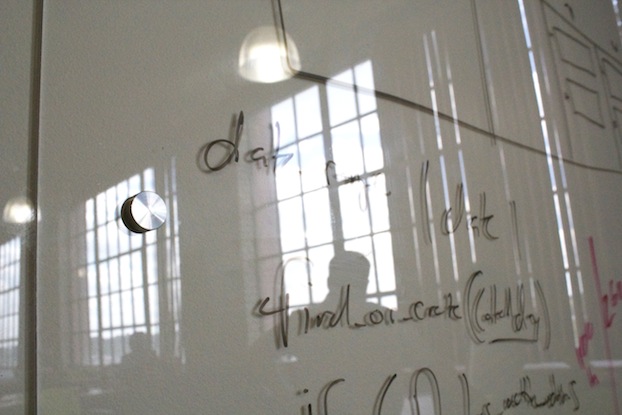In an effort to justify my procrastination this morning, I perused Lifehacker for insights on productivity and time (shocker) optimization, and how I can optimize it for my life. Here are some of my takeaways:
- Our Best Ideas Come in the Shower, because the warm environment contributes to increased dopamine flow. And since people usually shower when they’ve just woken up, they’re fairly relaxed which allows their minds to wander into the their subconscious for great ideas. The minor preoccupation of scrubbing and shampooing distract us sufficiently to delve further into subconscious while our motor functions go on autopilot.
- Another LH post offers some insight on How to Find Your Creative Sweet Spot. One point this article encouraged me to reexamine is my gross (mis)management of time. I’m hard on myself, but I know I could be a lot more efficient if I kept to a self-imposed schedule.
- I already keep todo lists in Producteev, my favorite task manager, but this article on how Droptaskuses Euler (not Venn as on commenter pointed out) diagrams to depict your tasks visually might lure me away to yet another cloud service. I’m likely to recommend this one for my team over at Geronimo, as it seems well-suited for project management.
- You have to be ready to capture your ideas as you uncover them, and this waterproof notepad for the shower might make a good gift for someone who likes to write them down. I think recording myt asks with my Siri to Gmail to Producteev IFTT (If This Then That) recipe is a better fit for me. I’ll just have to figure out a way to trigger Siri from the shower…
- I could also try to Trick my Brain Into Being Productive by re-prioritizing my task list. The tip here is to mark the otherwise insignificant tasks urgent and important to deceive yourself into acting on your de-prioritized tasks first; basically, by putting your actually urgent and important tasks at the bottom of your task list. I would hope my subconscious isn’t foolish enough to fall for this one, but hey if it works then who cares?
- That same article also points out that environmental cues like warmer temperatures, as elucidated in the shower insight, can also boost productivity. I’ve know I’m photo-sensitive, so now that my desk is on the breakfast table next to the brightest windows in our townhouse, I get plenty of light–especially in the morning. The same thing goes for background noise, which is why relocating to a bustling coffee shop can be a good break from a quiet home office. This explains why I like to work at work in college commons buildings so much. I also read that playing unfamiliar music, like from a Pandora channel, can help as long as you won’t listen too critically or have any emotional attachment to the music.
- I used the interactive nap wheel to find the best time for my ultimate nap. In my case, 2 PM is the point in the day when my body’s potential for REM and slow-wave sleep intersect. A 15-20 minute nap at that time will yield better work; maybe because I’m less productive from having recently eaten lunch or because it relaxes me enough to reach my subconscious again for that creative potential. The Boston Globe put out an infographic on “How to Nap” that I might reference later.
- Scheduling my daily activities around my body’s natural clock and rhythm makes a lot of sense, and the resescorrelates well to my undergraduate thesis. It makes a lot of sense.
- That WSJ article on peak times also suggests that early morning emails and tweets are ideal whereas evening Facebook posts earn the most Likes. It has to do with stress when people experience certain emotions and the resulting behaviors. So if your ideal audience is upbeat and positive, you’ll reach more of that audience around 8 or 9 a.m. (or 1-1.5 hours later on weekends), whereas if you’re looking for insight maybe some after dinner Facebook is right for you as that’s when users are home from work and not as stressed. That article also indicated that our physical performance is at its peak in the later afternoon with increased muscle strength and lung capacity, so reworking your workout schedule to suit might garner better results.
- I think I have a friend who subscribes to Jerry Seinfeld’s “Don’t Break the Chain” solution to productivity. I think that technique is good for perfectionists who like to challenge themselves to maintain a clean record. It might induce too much stress or regret in my life, especially if I can keep a streak.


About The Author: Jeff Brown
[cryptothanks]
More posts by Jeff Brown